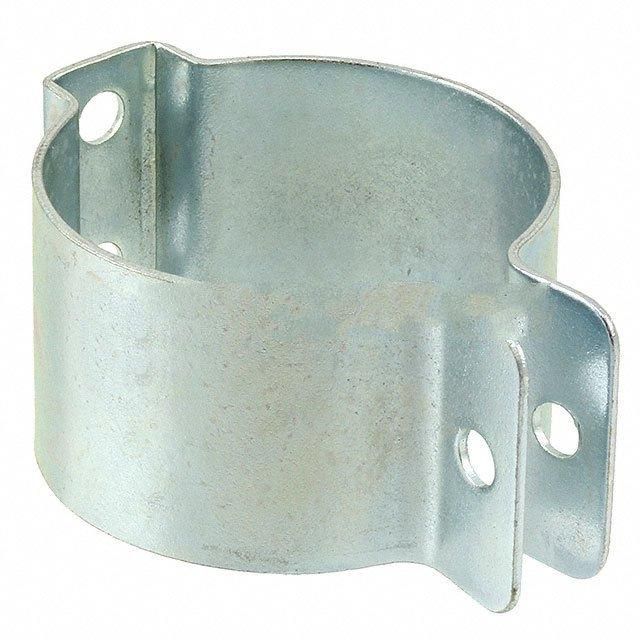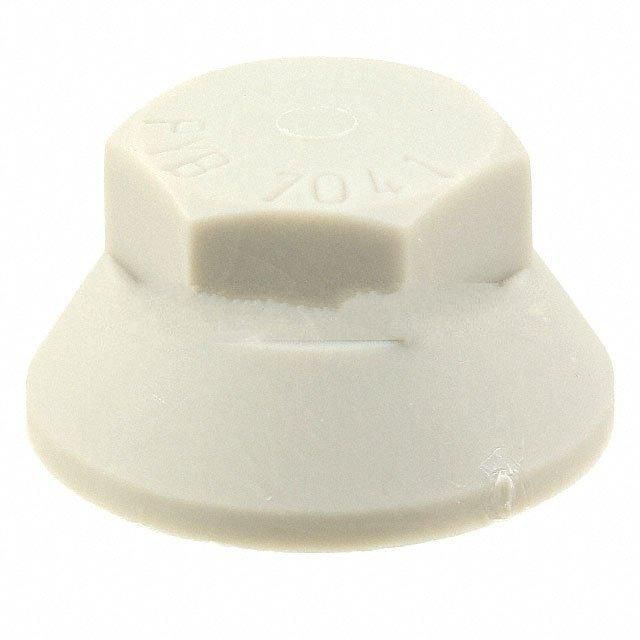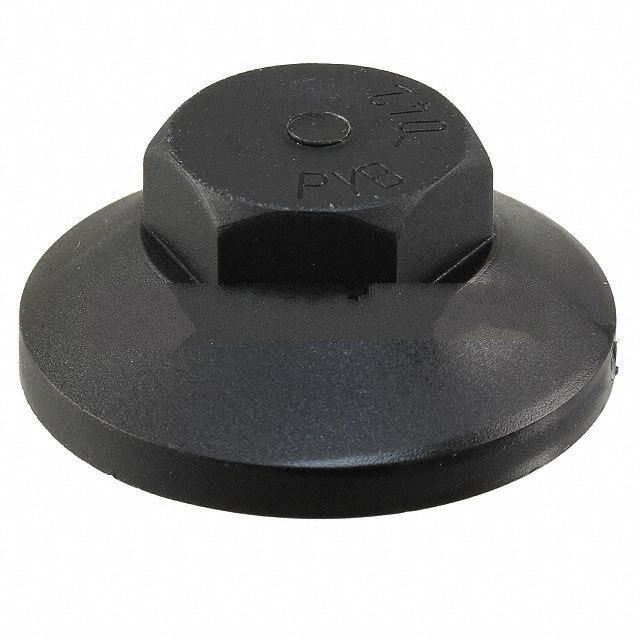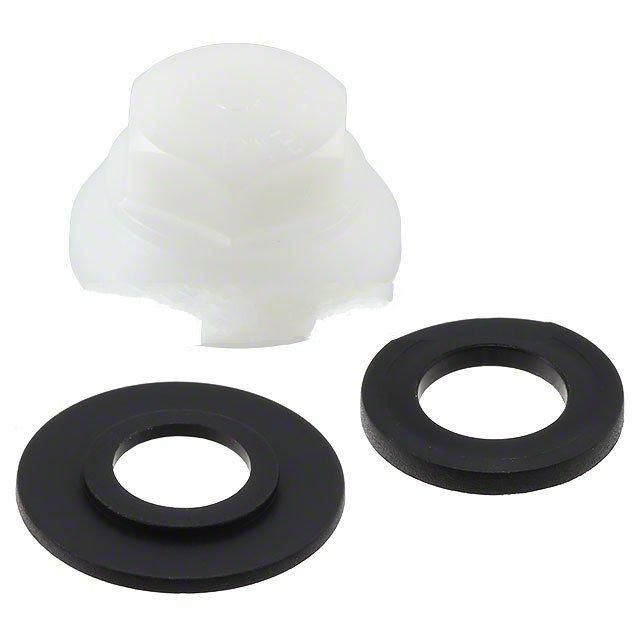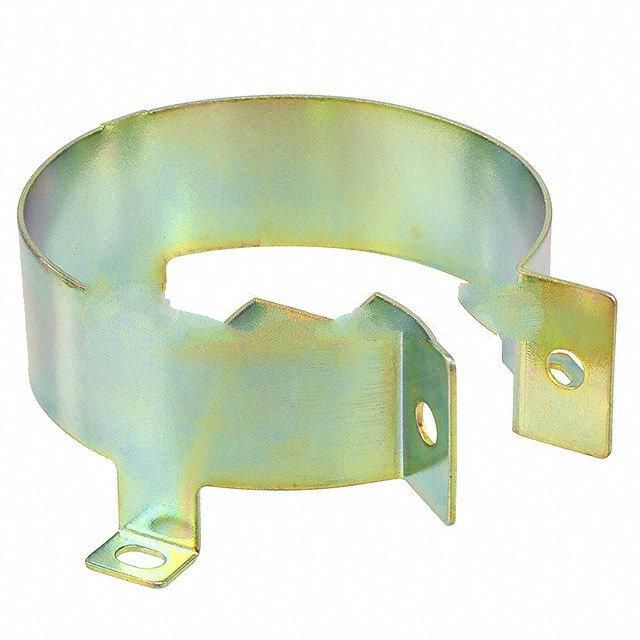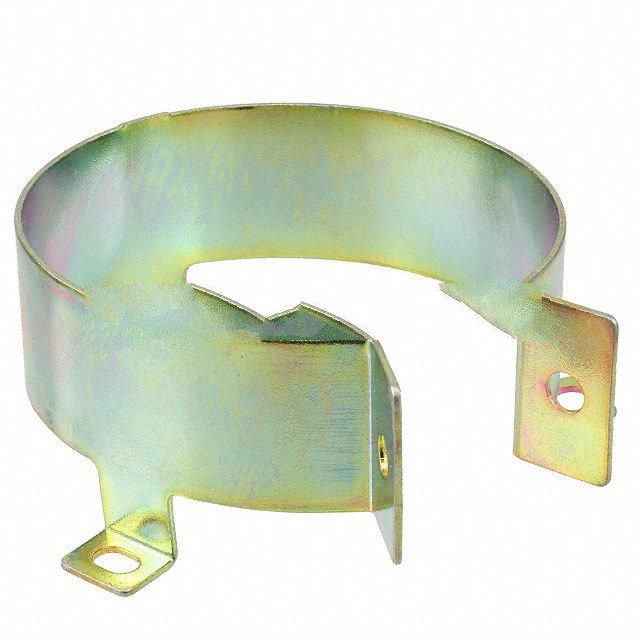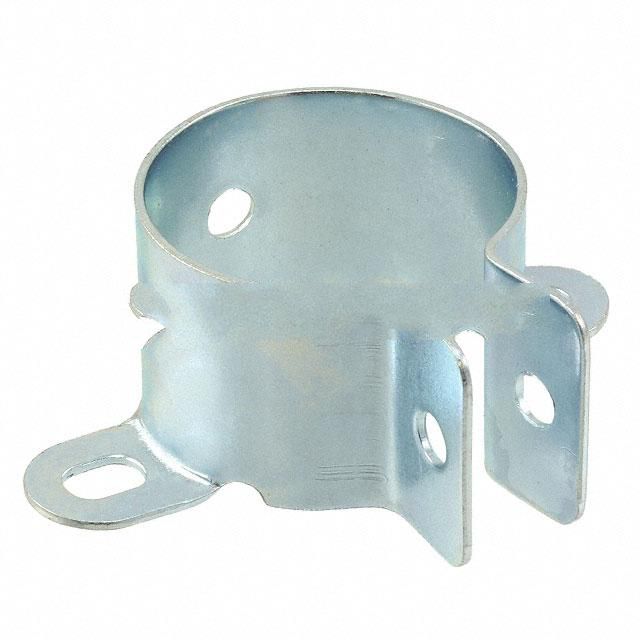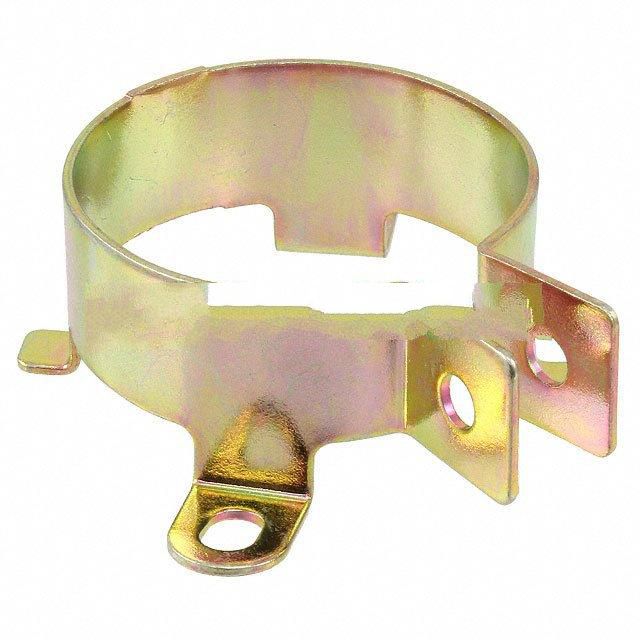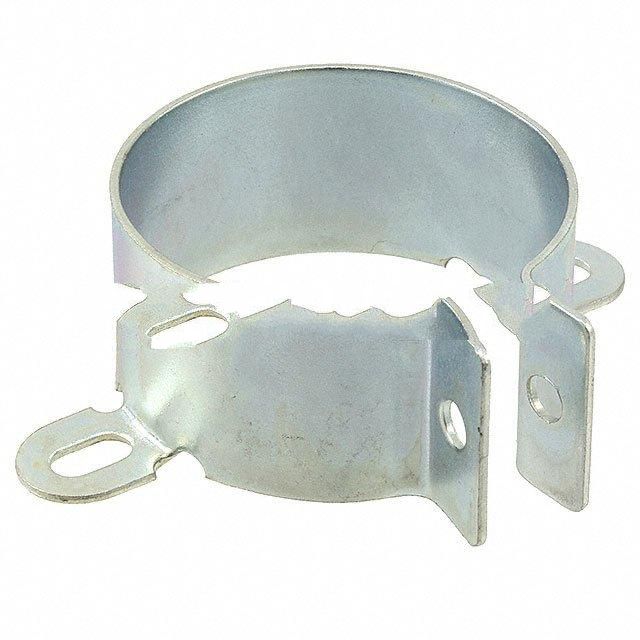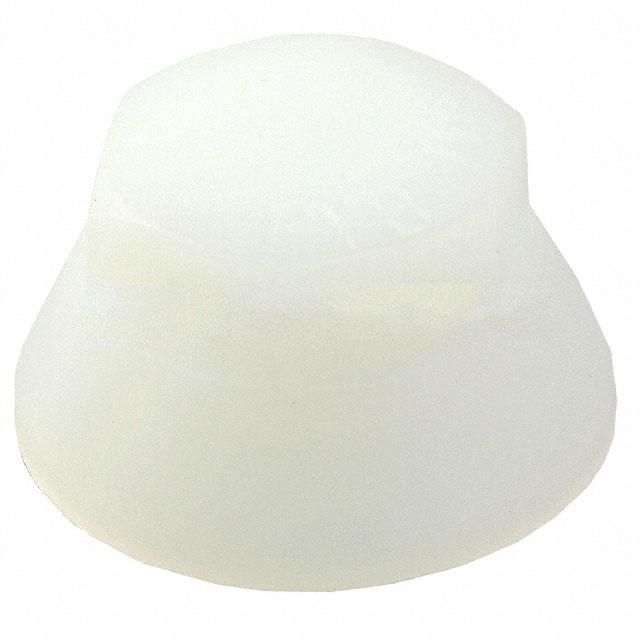The difference between non-polar capacitors and polarized capacitors
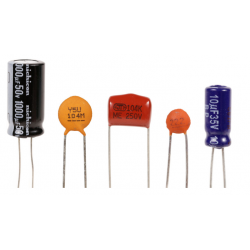
The difference between non-polar capacitors and polarized capacitors
Non-polarized capacitors are a type of capacitor commonly used in electronic circuits. According to the polarity of the capacitor, capacitors can be divided into non-polar capacitors and polar capacitors.
Introduction
Non-polar capacitor is a type of capacitor. Depending on whether they have polarity, capacitors can be divided into polarized capacitors and non-polar capacitors.
This article mainly explains:
1. What is a non-polar capacitor;
2. Its basic concept?
3. How to choose non-polar capacitors?
4. What is the difference between electrolytic capacitors and non-polar capacitors?
1. What is a non-polar capacitor?
Non-polar capacitors generally use double-layer capacitor technology, which places a medium between the two electrodes, usually made of polypropylene and other materials, so that the charge and electric field are evenly distributed between the two electrodes, so no matter which positive/negative polarity is connected to electrode, its capacitive effect is not affected.
Common types of non-polar capacitors
The more common types of non-polar capacitors currently on the market include: polypropylene film capacitors, ceramic capacitors, mica capacitors, porcelain fixed capacitors, etc. Among them, polypropylene capacitors are widely used and have the advantages of small size, large capacitance, high precision, and long service life. Ceramic capacitors are often used in high-frequency circuits because of their good temperature stability and linear characteristics.
Common types of polarized capacitors
There are many types of polarized capacitors. Common ones include tantalum capacitors, aluminum electrolytic capacitors, tungstate capacitors, etc. Tantalum capacitors have small size, large capacity and long service life, and are widely used in micro electronic products; aluminum electrolytic capacitors have simple structure, low cost and a wide range of applications, but their service life is limited due to the aging of the electrolyte.
2.Basic concepts
There is no positive or negative distinction between the two pins of a non-polar capacitor. They can be connected to the circuit in any order without causing reverse electrolyte overflow.
Non-polar capacitors are mainly used in coupling, decoupling, feedback, compensation and oscillation circuits. The picture below shows what a non-polar capacitor looks like:

Non-polar electrolytic capacitor
3. Function
3.1 Non-polar capacitors are used in pure AC circuits. Due to their small capacitance, they can also be used in high-frequency filtering.
The following uses an example to illustrate the application of capacitors:
This example mainly introduces the RC spark suppression circuit. When the antenna receives a radio and television program, if you turn on the fluorescent lamp and the fluorescent lamp flashes, you will hear irregular sounds from the radio or TV speakers. Many bright lines and bright spots on the TV screen are high-frequency clutter interference caused by electric sparks.
When an inductive circuit is broken, a spark occurs between the contacts. As shown in the circuit on the left side of Figure 2, the switch S is suddenly turned off and the current disappears quickly, that is, the current changes greatly, so a large self-inductance occurs at both ends of the coil. This electromotive force can resist the change of current in the same direction as the applied voltage. When the two are superimposed, the voltage U1 across the switch will be very high. When the voltage is higher than a certain value, this "sharp" voltage will break down the air and form an electric spark.
Sparks may cause contact ablation and oxidation, leading to failure. Therefore, it is important to eliminate sparks between contacts. When the circuit is cut off, as long as the current of the control coil does not drop suddenly, the voltage across the coil will not be too large, so sparks will not be generated. As shown in the circuit on the right below, connect an RC spark suppression circuit to both ends of the inductor. When the switch suddenly turns off, i1 charges the capacitor. Part of the magnetic field energy in the inductor is dissipated on R and r, and part of it is converted into electric field energy in the capacitor C, causing the capacitor C to re-discharge, thereby eliminating sparks.
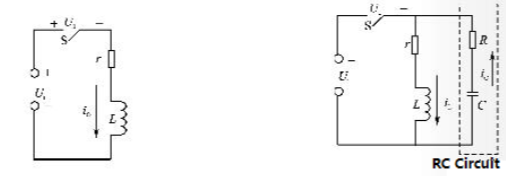
Inductive circuits and spark absorbing circuits
3.2 Working principle
Electrical sparks cause ablation and oxidation of switch contacts, causing switch failure. Therefore, it is necessary to protect the switch contacts through an absorption circuit. If the circuit current can be reduced at a slower rate, the induced electromotive force generated by the inductor in the circuit will be reduced, thereby avoiding the generation of sparks.
Use an RC series circuit connected in parallel at both ends of the inductor. When the switch in the circuit is turned off, the current will flow through the RC, and part of the magnetic field energy in the inductor will be consumed on the resistance in the RC loop and the internal resistance of the inductor. stored on the capacitor. This avoids the generation of high-voltage sparks.
4. The difference between non-polar capacitors and polar capacitors
The principle of polarized and non-polar capacitors is the same, that is, storing and releasing charges; the voltage on the plate (the electromotive force accumulated by the charge here is called voltage) cannot change suddenly.
Different media, different performances, different capacities, and different structures lead to different usage environments and uses. On the contrary, with the development of science and technology and the discovery of new materials, better and more diverse capacitors will appear.

Different types of non-polar capacitors
4.1 Different dielectrics
What is a dielectric? It is the insulating material between two capacitor plates. Many polarized capacitors use electrolyte as the dielectric. , which will produce a much larger capacitance than other non-polar capacitors in the same volume.
In addition, polarized capacitors using different electrolytic materials will have different capacities. The withstand voltage of the capacitor is also related to the capacitor material. Many non-polar capacitors use metal oxide film or polyester film. Whether a capacitor is polarized depends on whether the nature of the dielectric is reversible.
4.2 Different performance
The requirements put forward by applications continue to increase, resulting in increased performance and demand. For example, if the TV power supply must use polarized metal oxide film capacitors, and at the same time meet the requirements in terms of capacity and voltage resistance, then the entire TV casing may be filled with power. However, the filter can only use polarized capacitors without changing the polarity. Generally, the capacity of electrolytic capacitors can exceed 1000uF, and they are mostly used in signal coupling, decoupling, power filtering, etc. Most non-polar capacitors have capacities below 1000uF and are used in resonance, coupling, frequency selection, current limiting, etc. Of course, there are also large-capacity, high-voltage non-polar capacitors, which are often used for power factor compensation, motor drive shifting, frequency conversion shifting and other purposes. There are also many types of non-polar capacitors.
4.3 Different capacities
As mentioned before, capacitors of the same volume have different capacitances under different dielectrics.
4.4 Different structures
In principle, any shape of capacitor can be used in the environment without considering point discharge. The most commonly used electrolytic capacitors are round, and square ones are rare. Capacitors come in a variety of shapes, such as tubular, deformed rectangular, sheet, square, round, combined square or round, etc., depending on their use occasions. Of course, there is another invisible thing called distributed capacitance, which must not be ignored in high-frequency and medium-frequency devices.
4.5 Different usage environments and purposes
Due to internal materials and structures, polar capacitors (such as aluminum electrolytic) can have a large capacity, but their high-frequency characteristics are not good, so they are suitable for power supply filters and other occasions. There is also a polar capacitor with good high-frequency characteristics - tantalum electrolytic, which is relatively expensive;
Including ceramic capacitors, monolithic capacitors, polyethylene (CBB) capacitors, etc. These non-polar capacitors are small in size, low in price, and have good high-frequency characteristics, but are not suitable for large capacities. Ceramic capacitors are generally used in high-frequency filtering and oscillation circuits.

different capacitors
Non-polarized capacitors have several significant differences compared with polar capacitors:
Non-polar characteristics: Non-polar capacitors have no positive and negative poles and can be used in any direction in the circuit. This characteristic makes them ideal for use in alternating current (AC) circuits, or in direct current (DC) circuits, where the polarity of the voltage may change.
Construction and Materials: Non-polar capacitors are usually made of materials such as ceramic, polyester, polypropylene, etc., while polar capacitors (such as electrolytic capacitors) are usually made of metal foil and electrolyte materials. Non-polar capacitors have a simple structure and can be made into smaller sizes.
Voltage characteristics: Since non-polar capacitors have no polarity restrictions, they can usually operate in a wide voltage range, while polar capacitors (especially aluminum electrolytic capacitors and tantalum capacitors) are easily damaged when their rated voltage is exceeded.
Application fields: Non-polar capacitors are suitable for high frequency and low voltage applications, such as signal coupling, noise filtering, frequency tuning, etc. Polar capacitors are often used in situations that require larger capacitance and higher voltage, such as power supply filtering, energy storage, etc.
Comparison with other types of capacitors:
electrolytic capacitors: Electrolytic capacitors generally have higher capacitance values and polarity and are suitable for low frequency and high voltage applications. Non-polar capacitors generally have smaller capacitance values but are suitable for high frequency applications.
ceramic capacitors: Ceramic capacitors are a common type of non-polar capacitor. They are small and suitable for high-frequency applications, but the capacitance value is usually low.
film capacitors: Film capacitors are also non-polar, providing stable capacitance values and low leakage current. They are suitable for use in precision circuits but generally cost more than ceramic capacitors.
In summary, non-polar capacitors have high flexibility in circuit design and are suitable for a variety of different application scenarios, especially in environments where AC signals are processed or frequencies are high.
edit author:

Jinftry(Hong Kong registered company name: JING FU CAI (HONGKONG) INTERNATIONAL CO., LIMITED) is an electronic parts distributor selling latest electronic components including integrated circuits, IC electronics, IC integrated circuits, IGBT, IGBT modules, button battery LR44,discrete te semiconductors, circuit protection, capacitors, resistors, potentiometers, transformers, isolators, crystals , oscillators, resonators, power managers, connectors, switches, relays, sensors, optoelectronic devices, diodes, and various batteries. Welcome to purchase electronic components from brand manufacturers. To view the solutions, you can log in to https://www.jinftry.com/ for inquiries

